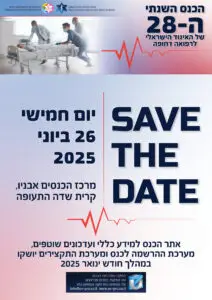פוסט זה זמין גם ב:
![]() עברית
עברית
Written by Sam Parnell
Spoon Feed
The modified Sgarbossa criteria were significantly more sensitive (81% vs 56%) and just as specific (96% vs 97%) compared to the original Sgarbossa criteria for diagnosis of occlusion myocardial infarction in the presence of ventricular paced rhythms.
Why does this matter?
Diagnosis of myocardial infarction for patients with ventricular paced rhythms is challenging. The usual STEMI criteria on ECG cannot be applied in these scenarios, and recent guidelines have suggested utilizing the original Sgarbossa criteria. Unfortunately, the original Sgarbossa criteria have high specificity but low sensitivity for OMI.
In 2012, Smith et al derived a modified Sgarbossa criteria (MSC) defining excessively discordant ST-elevation relative to the amplitude of the preceding S-wave, which appeared to have higher sensitivity than the original Sgarbossa criteria (OSC). See Figure 1 from the article below which describes the original (unweighted) and modified Sgarbossa criteria. Please note that the concordant ST-depression criterion for the MSC below was expanded to include leads V4-V6 because a dominant QS pattern is frequently seen throughout the precordial leads in paced rhythms. So, how does the MSC actually stack up for patients with ventricular paced rhythms?

From cited article
Keep up the pace, modified Sgarbossa wins the race!
This was a multicenter, international, observational case-control study from January 2008 to January 2018 for adult patients with ventricular paced rhythms who presented with symptoms concerning for acute coronary syndrome (ACS).
There were 3 main groups in the study. The OMI group was defined angiographically as TIMI grade 0 to 1 flow or angiographic evidence of coronary thrombosis and peak cardiac troponin I ≥10.0 ng/mL or troponin T ≥1.0 ng/mL. There were 2 control groups: the “non-occlusion MI-angio” group consisted of patients who underwent coronary angiography for presumed type I MI but did not meet the definition of OMI, and the “no occlusion MI” control group consisted of randomly selected ED patients without OMI. In total, there were 59 patients in the OMI group, 90 patients in the non-occlusion MI-angio group, and 102 patients in the no occlusion MI group.
Sensitivity for OMI was 81% for the MSC compared to 56% for the OSC. When utilizing the expanded ST-depression criterion to include leads V4-V6, the sensitivity of MSC for OMI improved to 86%. The sensitivity of the original “weighted” Sgarbossa criteria for OMI was even lower at 53%. The MSC criterion of proportionally excessive discordance helped identify 17 (29%) additional OMI patients. Overall, both rules had high specificity for no OMI (96% for MSC vs 97% for OSC). Specificity for the non-occlusion MI-angio group was slightly lower for both groups (84% for the MSC vs 90% for the OSC).
There were several limitations of this study, including the case-control design and variations between study sites. However, the authors noted that any bias should equally affect the MSC and OSC, so the primary results of the study appear to be valid. Based on this data, the modified Sgarbossa criteria seem to more accurately diagnose OMI and appear to be the best electrocardiographic tool for evaluating patients with ventricular paced rhythms and symptoms concerning for ACS.
Source
Electrocardiographic Diagnosis of Acute Coronary Occlusion Myocardial Infarction in Ventricular Paced Rhythm Using the Modified Sgarbossa Criteria. Ann Emerg Med. 2021 Jun 22;S0196-0644(21)00249-3. doi: 10.1016/j.annemergmed.2021.03.036. Online ahead of print.








